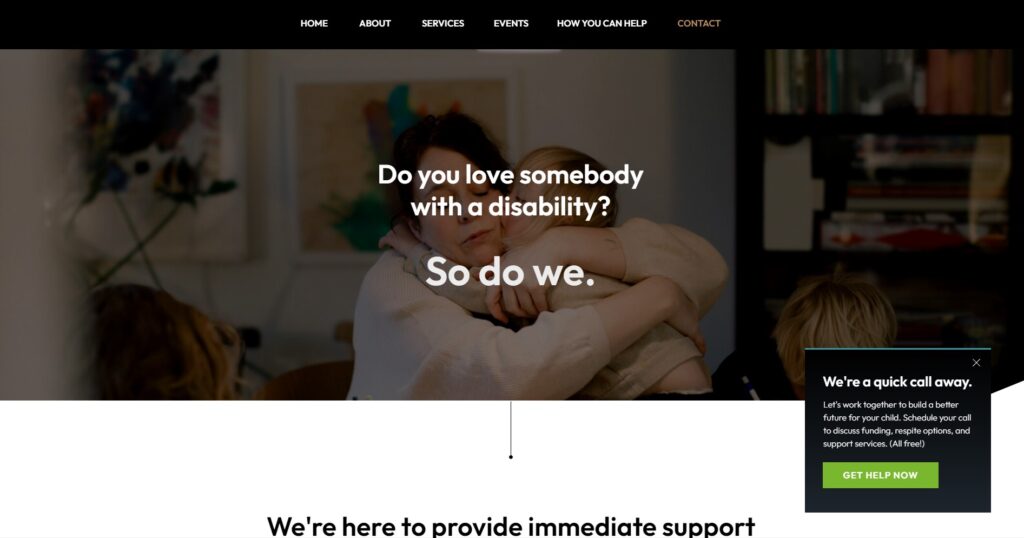2 Quick Things That’ll Improve Your Website’s Performance
You ever click on a website and wait… and wait… and wait some more? Yeah, me too. And it’s the worst, right?
If your website’s doing that to people, you’re need to improve your website’s performance. Otherwise, basically telling them, ‘Go away, I don’t care.’
Which, I’m guessing, isn’t the vibe you’re going for. A slow website is terrible for your business. People are impatient, and frankly, we’ve got better things to do than watch a loading bar crawl across their screen. (Unlike in 1995 haha)
So, let’s fix that, shall we?
Before we get to the fixes, let’s see where your site stands right now. Analyzing your site’s speed might sound intimidating, but it’s actually super easy. There are many free tools online that can give you a great overview of your site’s performance. And here’s the best part: they’ll tell you exactly how to fix it.
Table of Contents
A couple of our go-tos:
- Gtmetrix: This tool provides a comprehensive analysis of your site’s speed, giving you detailed insights into what’s slowing things down.
- Google PageSpeed Insights: This tool focuses on how your site performs on both desktop and mobile, and gives you recommendations on how to improve.
Take a few minutes to run your site through one of these tools. You might be surprised at what you find! And remember, even small improvements can make a big difference.
Improve Your Website’s Performance: Optimize image sizes
The most common thing we see is images killing speed on your site. Think of your site like a crowded subway car. You’ve got all these people (visitors) trying to get through, but if someone’s carrying a giant, unwieldy suitcase (your massive, unoptimized images), everything grinds to a halt.
YES, I’ll be honest, that paragraph was generated by AI, but I stand by it. It’s a fantastic analogy.
- Impact: Massive. Large images are a common performance killer.
- Approachability: Extremely easy. Tools like TinyPNG are drag-and-drop simple.
- Why it’s great: Noticeable speed improvements, better user experience, less bandwidth usage.

How to fix it
TinyPNG. Seriously, it’s magic. Drag your images in, and it shrinks them down. If you’re using a tiny picture on your site, don’t upload a photo that could be printed on a billboard.
Faster site = happier visitors.
Happier visitors = happier Google.
Happier Google = more traffic.
See how this loops around to really work for you?
Improve Your Website’s Performance: Improve Site Navigation
Okay, you know that feeling of walking into a Costco that’s two cities down? Signs are minimal and everything is skewed juuuust enough to confuse you. You’re there because you need something, but it’s frustrating and you might be tempted to just leave. That’s what bad website navigation feels like. We need to find what we’re looking for, and we need to find it fast.
- Impact: Directly affects user experience and bounce rates.
- Approachability: Moderately easy. Requires some planning, but can be implemented quickly.
- Why it’s great: Reduces bounce rates, improves user satisfaction, makes it easier for users to find what they need.

How to fix it
Keep your menu simple. No need for a million options.
Use words that make sense. “Services” is good. “Things we do that are super cool” is… not good. And don’t even get me started on the weird things people call their blog. “Thoughts from the Ether”? Just call it “Blog.” 🤣
Make sure your site works on all devices. Everyone’s on their phones, so take a peek through your site and make sure it’s not a jumbled mess on mobile.
Bonus round
We’ve got a few more tricks up our sleeve… because why stop at two?
Once you’ve got your images sorted and your navigation working properly, what’s next?
Browser Caching (Showit Edition):
- Ever notice how some Showit websites load lightning-fast when you visit them again? That’s browser caching at work. Basically, it’s like giving your repeat visitors a VIP pass.
- Showit itself handles a lot of the heavy lifting when it comes to caching, which is great news! They have built in optimizations.
- However, if you are using any embedded code, or external scripts, you will need to ensure that those scripts have browser caching enabled. Contacting the provider of the script will be the best way to do this.
- Also, ensure that your images are optimized, as discussed earlier. Showit, like any website platform, will load faster when images are optimized.
Mobile Optimization (Showit Specific):
- Use Google’s Mobile-Friendly Test, but also utilize Showit’s mobile editor to its fullest extent. Showit’s dual editor is a massive advantage, so ensure that your mobile view is perfect.
- Test your Showit site on various mobile devices to ensure consistency.
Clear Calls to Action (CTAs) in Showit:
- Utilize Showit’s design capabilities to make your CTAs visually appealing and prominent.
- Use Showit’s link actions to ensure that your CTAs lead to the correct pages or actions.
- Use Showit’s click tracking to monitor the effectiveness of your CTAs.

That’s it! A few easy wins for your website performance. Faster loading times, easier navigation, and happier visitors. What’s not to love? Now go make it happen!
If all this talk of optimization and performance has you feeling dizzy, don’t worry! We specialize in creating Showit websites that are not only stunning but also lightning-fast and user-friendly. Let us handle the technical details while you focus on what you do best. Check out our services to see how we can help!




